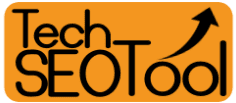A website is a powerful tool for communication and sharing information.
It consists of a collection of interconnected pages that can be accessed through a web browser using a URL.
As a website administrator or a regular user, it's important to understand the terms related to websites to better understand how they work and to comprehend documents that discuss them.
Common Website Terminology and Explanations
Here are some terms related to websites, their components, and parts:
- Website: A collection of web pages linked together that form a single topic.
- Web Page: An independent unit that is part of a website, containing text, images, and videos.
- Web Address (URL): The unique address used to access a web page on the internet.
- Domain Name: The name of the website on the internet, like "techseotool.com".
- Primary Domain: The main domain name of a website, like "techseotool".
- Subdomain: A section of the primary domain used to organize website content, like "something.techseotool.com".
- Protocol: A set of rules that determine how data is exchanged between the browser and the web server.
- Path: The location of a file on a web server.
- Parameters: Additional information added to a web address to specify page content.
- Hosting: A service that stores website files on a server connected to the internet.
- Sitemap: A file that helps search engines index the pages of a website.
- Internal Link: A link that points to another page within the same website.
- External Link: A link that points to a page on another website.
- Content Creator: The person who creates content for the website.
- Writer: The person who writes content for the website.
- Publisher: The person or organization that publishes website content.
- Section: Groups of related pages on a website.
- Category: A classification of web pages based on their topic or content.
- Menu: Like the main menu, it is a collection of links to other pages on the website.
- User: The person who uses the website.
- Audience: The people the website is intended for.
- Visual Identity: The appearance and logo of the website.
- Brand: The name and logo of the website.



